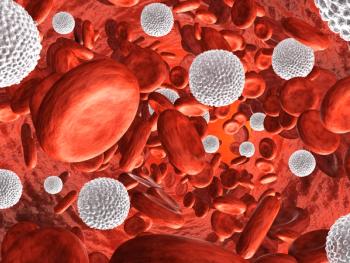
Fifth Course of Chemotherapy Benefited Pediatric Low-Risk AML Patients
A fifth course of cytarabine chemotherapy resulted in improved overall and disease-free survival in pediatric patients with low-risk acute myeloid leukemia.
Removal of a fifth course of chemotherapy containing cytarabine resulted in worse overall survival and disease-free survival in pediatric patients with low-risk acute myeloid leukemia (AML), according to the results (abstract
The pooled analysis compared outcomes for patients with low-risk AML from the COG AAML 1031 trial and the AAML 0531 trial. In AAML 1031, pediatric patients were treated with four-course chemotherapy consisting of two induction courses of cytarabine/daunorubicin/etoposide, a third course of cytarabine/etoposide, and a fourth course of cytarabine/mitoxantrone. AAML 0531 included the same four courses plus a fifth course containing high-dose cytarabine.
“Overall there appears to be a benefit of a fifth course of cytarabine in low-risk patients with AML,” said Kelly D. Getz, PhD, of the Children’s Hospital of Philadelphia, who presented the results. “The benefit was most evident in patients with uninformative cytogenetic or molecular markers who had negative MRD [minimal residual disease] at the end of induction I.”
“Improvements in outcomes in pediatric AML have largely been attributed to intensification of cytarabine- and anthracycline-containing regimens and enhanced supportive care,” Getz explained. “While post-remission chemotherapy with cytarabine has been shown to improve outcomes in AML, the optimal number of courses and cumulative cytarabine exposure is uncertain.”
The pooled analysis included 921 patients from the studies (21% received the fifth course of treatment). The median times to absolute neutrophil count and platelet count recovery after course 4 were comparable between the two trials. Follow-up for outcomes was done for patients who survived in first remission to the start of the fourth course without relapse and met low-risk classification criteria.
Patients on both arms had an overall survival rate greater than 80% (80.6% for four vs 87.5% for five courses), suggesting “the salvageability of patients following relapse,” Getz said.
However, the patients who had only four courses of therapy still had significantly lower overall survival (hazard ratio [HR], 1.61; 95% CI, 1.02–2.56; P = .042) compared with five courses.
Similarly, there was an 11% difference in disease-free survival rates between those patients who had four courses compared with five courses of chemotherapy (59.0% vs 69.9%; HR, 1.48; 95% CI, 1.10–1.98; P = .010).
The researchers also examined differences by low-risk subgroup. Low risk was defined as patients with the presence of inv(16)/t(16;16) or t(8;21) cytogenetic features, NPM1 or CEBPA mutations, or MRD < 0.1% post-induction I in those with no high-risk features.
Among patients with favorable cytogenetic and molecular features, the point estimates for disease-free survival and overall survival were approximately 1, indicating no benefit of a fifth course of chemotherapy, Getz said. However, among patients who had uninformative cytogenetic or molecular features but who were MRD < 0.1% at the end of induction I, the disease-free survival (HR, 1.86; 95% CI, 1.18–2.92; P = .008) and overall survival (HR, 1.91; 95% CI, 1.01–3.61; P = .046) were almost twice as high in patients who received five treatment courses compared with four courses.
Newsletter
Stay up to date on recent advances in the multidisciplinary approach to cancer.

















































































